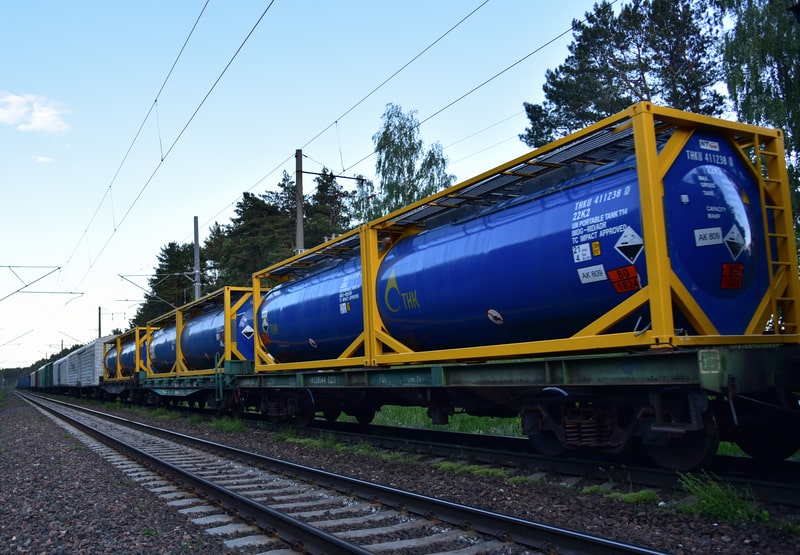Last updated on September 15th, 2023
Different Natural Gas Types
51. In its raw form, conventional natural gas consists of about 90 percent methane. The remainder of natural gas comprises the other primary gasses, ethane, butane, and propane. It also contains various hydrocarbons, which are oily liquids.
52. Deep natural gas, or unconventional gas, is mainly found deep into the Earth’s crust. It is difficult to get to these gasses, and drilling and extracting them from the earth is considered uneconomical.
53. Natural gas trapped inside shale deep underground is known as shale gas. Fracking and horizontal drilling are methods used to extract this type of unconventional gas to flow freely to the surface where it can be gathered.
54. Tight gas can be found trapped beneath tight rock formations, making it difficult to get to it. Expensive and difficult methods like acidizing extract this gas to the surface. Hydrochloric acid is injected into the well, which then dissolves the rock.
55. Another type of unconventional gas found in coal seams running underground is coalbed gas. When coal is mined, the gas is also collected and can be used just like conventional gas as a source of energy.
56. A renewable natural gas that can be used just like fossil natural gas is extracted from decomposing organic matter. This gas, known as biogas, comes from landfills where organic matter like sewage, plant, and animal matter decomposes. Biogas is a renewable energy source because human and animal waste is part of the daily life cycle.

Benefits of Natural Gas
57. Natural gas has many benefits for humans, and one of them is to use it for cooking food. It is excellent to use it as a backup when there are power outages or in remote areas with no electricity grid.
58. Natural gas is plentiful and will not run out soon, even if the usage increases. Methane, for instance, can be found in many places around the world where coal and oil deposits are available.
59. Natural gasses are also found in landfills and even in places where there are no coal or oil deposits. Gasses from landfills mainly contain methane, about fifty percent, and small amounts of organic compounds.
60. An electric power generation plant fueled with gas starts up much faster than those driven by other fuel types. Some coal power plants can start in an hour, while a gas plant can start in only 10 to 15 minutes.
61. Natural gas is much cleaner than other fossil fuel types like coal and other petroleum products. It produces about half the carbon dioxide than when burning coal or oil to provide the same energy.

62. Another benefit of natural gas is that it can be cooled to become liquid natural gas. Natural gas becomes a liquid if it is cooled to -260 degrees Fahrenheit. The volume decreases by about 600 times in the liquid form, making it much easier to transport.
63. Using natural gas in vehicles is another environmental benefit because of the low tailpipe emissions. According to research, it is shown that using natural gas in light vehicles will reduce greenhouse gasses by about 15 percent.
64. Natural gas can play a huge role in increasing energy security in both vehicles and electricity generation. With rapidly changing markets and growing security concerns, it will become essential to have backup sources.
65. Energy Transportation costs for both consumers and businesses can be significantly reduced. It will be a substantial cost-saving factor in areas where natural gas can be delivered with existing pipeline systems.
66. Natural gas can also be used for a wide range of applications, not just for cooking and electricity generation. It is also used in home and commercial refrigerators to keep your food cold so it can last longer.
67. Many jobs are created in and around the natural gas distribution industry. It is estimated that jobs in this industry will multiply. In the last five years, employment in the sector has grown by more than five percent.
68. More than just electricity is created with or from natural gas used daily by consumers. Other essential products and raw materials made from it include fertilizers, pharmaceuticals, and plastics. Different chemicals like ammonia, acetic acids, and methanol are made from natural gas.
The Future of Natural Gas
69. Keep in mind that natural gas is not renewable, so it will run out at some point. So, like oil and coal, natural gas resources will be depleted sometime in the future, but it will last longer than oil.
70. The Paris Agreement aims to move to a cleaner environment and strengthen the response to climate change. Moving away from dirty fuels to cleaner options like natural gas is part of the goal.
71. Because the transition to renewable resources for energy will take some time, gas can be used in the meantime. While renewable energy source technologies mature, gas will temporarily solve growing energy demands.
72. Millions are invested in modern methods for liquid natural gas solutions. The role of gas in the future is to provide global energy security in the process of transitioning to green energy sources.
73. While natural gas remains a primary source of cleaner energy, it will do so for the foreseeable future. Coal will be pushed out, and more gas will be directed into the energy industry to meet demands.
74. Gas will play an essential role in the future of energy supply to the world. Low-carbon gas, such as blue hydrogen, is generated through natural gas reformation. On the other hand, green hydrogen, generated through hydrolysis, produces no carbon dioxide.
How Green is Natural Gas
75. Natural gas produces about 45% less carbon dioxide than what is released by coal. It also has about one-third less CO2 than petroleum fuels and 15 percent less than wood, making natural gas relatively green.
76. Because of natural gas’s overall environmental benefits, it is known as a green fuel. It has fewer byproducts that may lead to climate change and increase global warming when burned to produce energy.
77. Compressed natural gas releases no smoke when burned, so it is safe to use in vehicles as fuel. It is also one of the safest options for power plants to generate electricity and supply heat for cooking.
78. Natural gas is considered the cleanest option of all the fossil fuel resources on Earth. Methane, one of the ingredients of natural gas, will also stay in the environment for much less time than carbon dioxide.
79. Natural gas can affect the air and the environment if prepared in unconventional ways. At drilling sites, increased concentrations of dangerous pollutants occur, which can be unhealthy for those who are living nearby.
80. The most significant portion of natural gas is methane, a very powerful greenhouse gas. It is about 84 percent more powerful than carbon dioxide measured over twenty years. So, even if methane doesn’t stay very long in the environment, natural gas is not really that clean.
81. An up-and-coming new technology in natural gas is fuel cells as an efficient and, more importantly, clean generation of electricity. It uses electrochemical reactions to generate electricity instead of combustion and kinetic energy conversion.
New Technology in Natural Gas
82. Safety is high on the list when it comes to extraction and uses in natural gas. Unmanned drones and underwater vehicles are some of the latest technologies that will help improve this industry’s safety factor.
83. Gas companies use robots to handle the heavy pipes used in gas extraction sites. These pipe handlers, also known as snake bots, will help to protect workers from injuries by doing the dirty and heavy work.

84. Predictive models driven by AI can be used to analyze unstructured data to forecast future events quickly. It can save a lot of time and effort, not to mention the cost in the future, while improving adaptability.
85. Improved connectivity will also help to prevent early failures and provide predictive maintenance. This technology will help decrease downtime on breakdowns, prevent it altogether, and provide early warning for reduced performance.
86. Digital Twin Technology will optimize production in the future of gas extraction and distribution. This technology can obtain direct insights into the inner workings of a site. Adding value and improving operations are some of the benefits the gas industry will get from this new technology.
